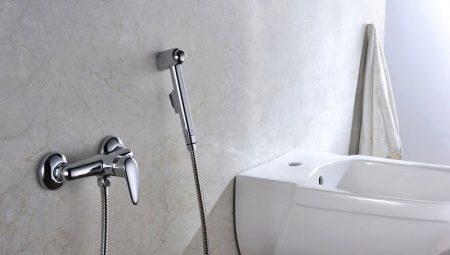The toilet is considered the most frequently visited room in the house, and to make spending time in it convenient, it is important to choose the right plumbing designed for hygiene procedures. Since most toilets are modest in size, installing a bidet in them is problematic. The way out of this situation may be the acquisition of such a device as a watering can for a hygienic shower.
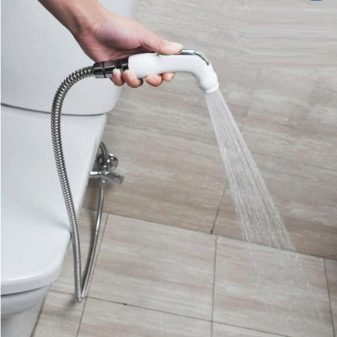
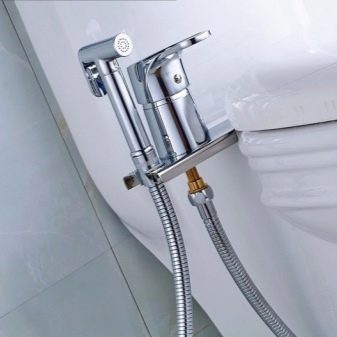
Features
A hygienic shower is a device with water supply installed separately from the toilet. Its main component is a watering can, it is fixed to the wall, therefore it does not interfere and can easily be put forward at any time when you need to put yourself in order. There are also modern models in which a hygienic shower is built directly into the toilet seat. Manufacturers produce watering cans with a number of additional features:
- automatic control of pressure and water temperature;
- hydromassage;
- self-rinsing nozzles before and after the procedure;
- cleaning the air in the toilet from unpleasant air using the built-in filter.
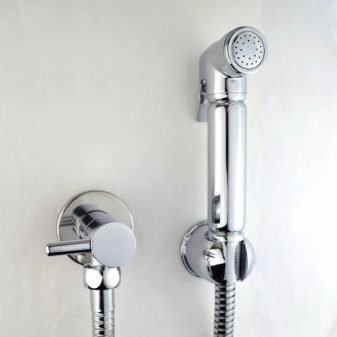
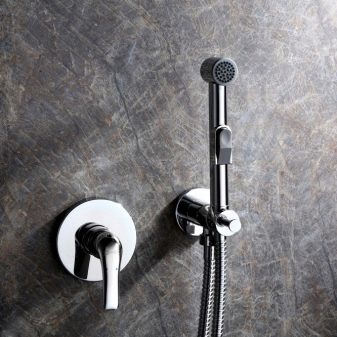
The price of such accessories is high, so most users prefer to choose equipment in the form of a mini-bidet, consisting only of a mixer, watering can and wall mount. Before giving preference to a particular model of watering can, it is important to think carefully about all the details. So, if expensive repairs are made in the bathroom, then the best solution would be to purchase a watering can with a shut-off valve, which can be built into the toilet. If the repair work is not completed, then it is best to conclude an open mixer.
A distinctive feature of hygienic watering cans from showers is that they have other design characteristics.
- Smaller sizes. They are almost invisible, which allows them to fit in the original design of the room.
- Number of nozzles. In hygienic watering cans, it is minimized (their nozzles are thinner), thanks to this, water is not sprayed during application.
- The presence of a foot pedal. This is the most important difference that sanitary hygiene cans have. The device system is equipped with a special shut-off valve, which, when you press the pedal located on the handle, opens and supplies water.
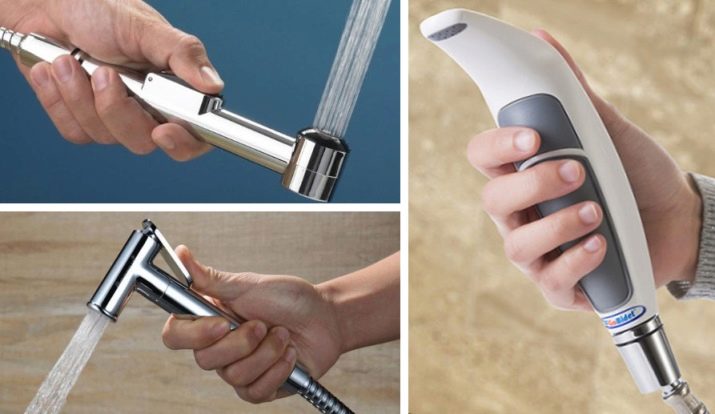
Advantages and disadvantages
Many consider a watering can for a hygienic shower useless nonsense, in fact, this is not so. Such a device reduces the risk of various diseases and eliminates frequent visits to a proctologist and gynecologist, as it is one of the main means of personal intimate hygiene. Also, with the help of this device, care for the baby is greatly simplified. Watering cans are especially indispensable for sick people or senior citizens who find it difficult to perform hygienic procedures under an ordinary shower.
Having these settings, you do not have to worry about the constant replenishment of paper towels and toilet paper.
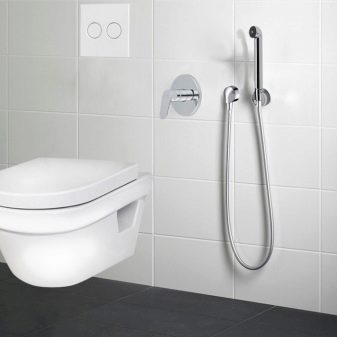
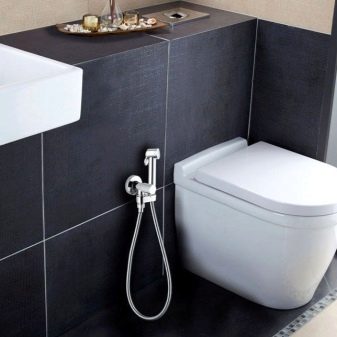
As for the shortcomings, this plumbing also has them, namely:
- during the installation of the watering can, it is necessary to additionally provide for the presence of some capacity, otherwise a huge puddle may run under it from the remains of water;
- if there are small children in the house, then you will have to provide constant control over the device, otherwise it will turn into a toy for little fidgets and there will be a constant flood in the toilet;
- the grid on the watering can should be changed periodically, and this entails additional costs;
- such a device is not suitable for people with a large complex, it is difficult for them to perform hygiene procedures in this way.
For the rest, the watering can is considered a profitable investment and a convenient accessory, which is quite realistic to install with your own hands.
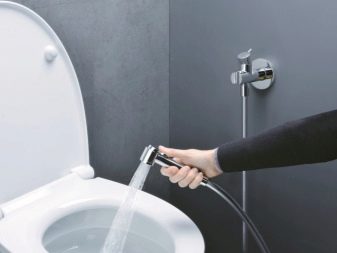

Kinds
Now the plumbing market is represented by different types of hygienic shower for the toilet, each of which differs in price, design features and method of operation. Consider the most common varieties of such a device.
- The first type is a toilet with a built-in hygienic watering can. This is a simple design, but the price is high, and when some part fails, you need to change the toilet. In the event of a breakdown, you will also have to redo the entire water supply system. Before installing such models, you must dismantle the old toilet and install the new device. Built-in watering cans have a water supply from below, but the control handle can be placed both on their side surface and on top.
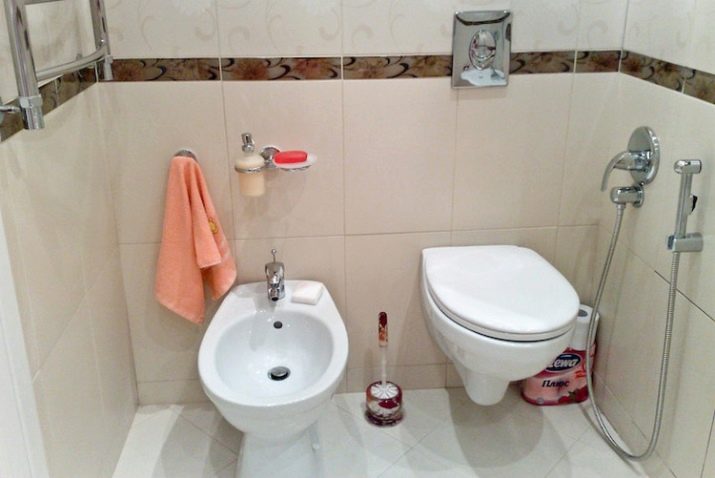
- The second type is a hygiene shower head mounted separately from the toilet and equipped with a mixer. This is an inexpensive option that anyone can afford. The only thing is that before buying this accessory you need to worry about the correct installation of the water supply wiring. This is justified by the fact that such a watering can requires a tap located next to the toilet. Manufacturers often supplement these models with a button, which makes it convenient to use them (there is no need to reach for the mixer to shut off the water).

- The third type. This device is intended for small bathrooms, as it is installed directly on the sink and takes up little space. In these models, the washbasin faucet simply changes to a retractable watering can, which has a special control button.
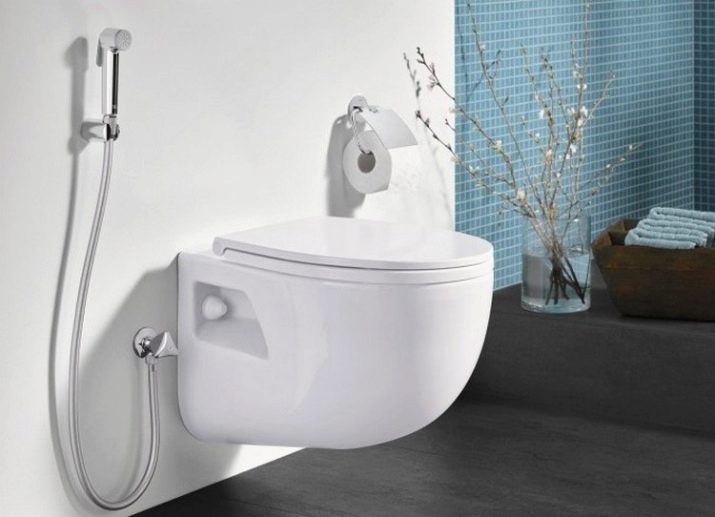
In addition to the above devices, it is very popular and toilet bidet. Its design provides for the supply of water through a retractable fitting with a watering can or spray. This option is considered an excellent choice for small toilets, where the area is quite limited. Some manufacturers complete this device with a separate hose with a watering can, but it costs much more than standard models.
Despite the fact that all of the above types of watering cans are convenient to use and allow you to comfortably carry out hygiene procedures, It is important to pay attention to the fact that they have a temperature regulator in their configuration for supplying water.
If it is not, then you will have to separately buy a thermostatic lever, which will maintain the water temperature at the same level.
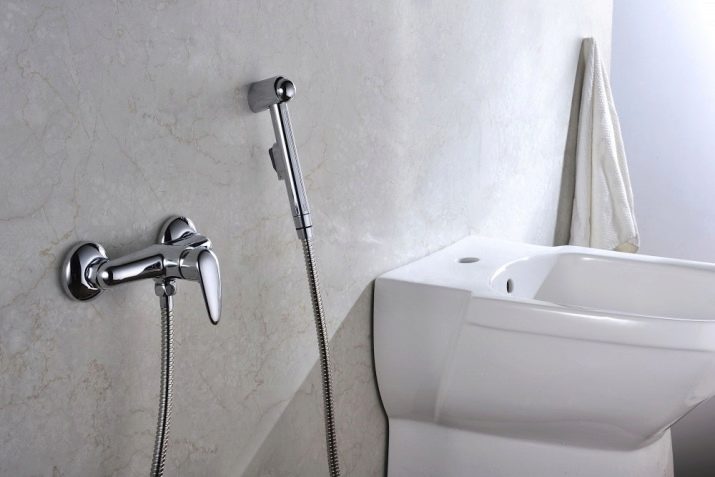
Popular models
In order for a watering can for a hygienic shower to reliably last a long time, you should trust only well-tested manufacturers, whose products have received many positive reviews. To date, the following options are considered the most popular models of watering cans.
- Tempesta-F Trigger Spray 30. This device is manufactured by the German manufacturer Grohe. A hygiene shower head, shut-off valve and holder are made of chrome. The product is characterized by high quality and reasonable price. There are no flaws.

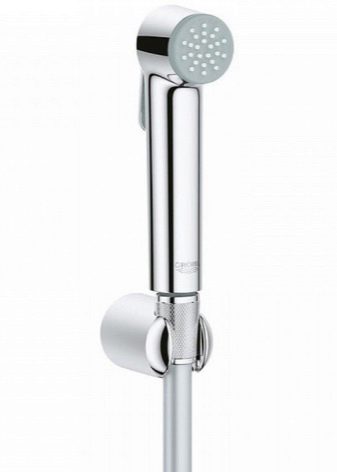
- Oras Bidetta 242031. The hygienic watering can of this model is in great demand, as the Finnish brand Oras guarantees its products excellent quality. Thanks to the chrome-plated finish, the fixture harmoniously fits into the modern design of the toilet.
Among the shortcomings can be noted the material of manufacture (plastic) and the lack of a control button.
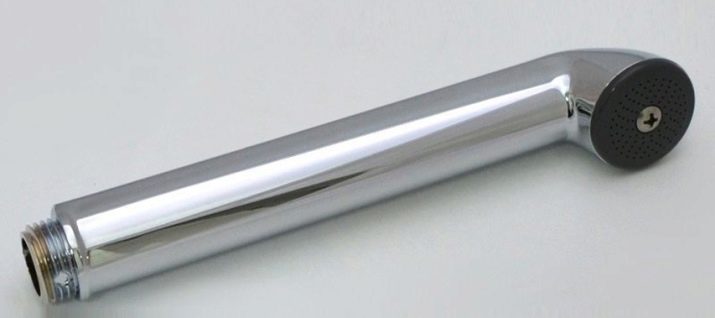
- Kludi Bozz 7304205-00 (Germany). This model comes complete with a 1250 mm hose. The watering can itself is made of brass, its diameter is 27 mm. The device is easy to use but expensive.
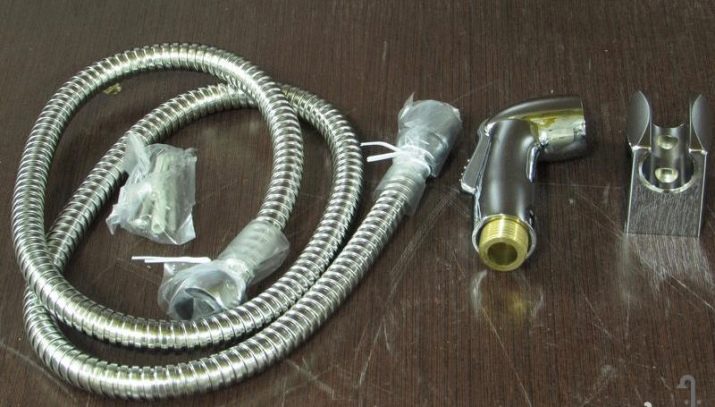
- Nicolazzi 5523 BZ (Italy). These watering cans from a world famous manufacturer have one distinctive feature - an unusual design. The height of the holder, which is included in the configuration, is 18.5 cm, the number of spray modes is 1. This model is a multifunctional device that allows you to make life more comfortable. The disadvantage of the product is the high price.
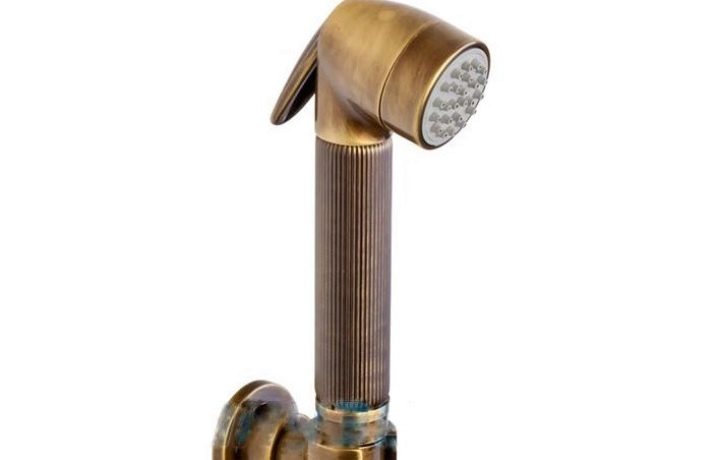
About what features of a watering can for a hygienic shower exist, see the following video.
